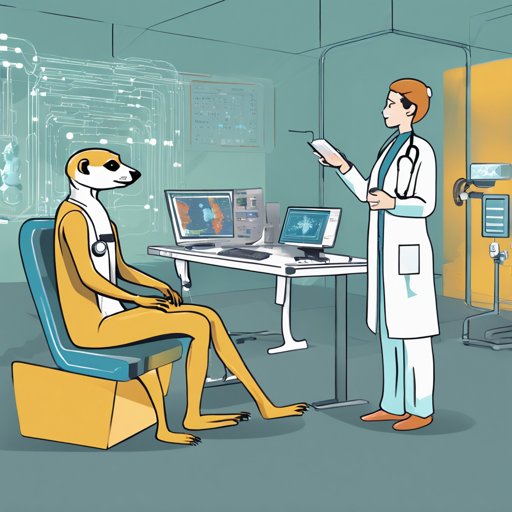Welcome to your beginner’s guide on utilizing Meerkat-7B, an innovative medical AI designed to assist in navigating complex medical questions with ease and accuracy. This model has not only surpassed the 60% passing threshold for the USMLE but also leverages advanced reasoning techniques from high-quality medical textbooks and instruction-tuned datasets to provide users with insightful health advice. Let’s dive into how you can effectively use this remarkable AI system!
Getting Started: Quick Start Guide
Before diving into the intricate functionalities of Meerkat-7B, ensure that your input queries follow the format specified below:
Example Query:
query = USER: What should I do when I get cold? ASSISTANT:
To use the model, you’ll need to apply the apply_chat_template function:
from transformers import AutoModelForCausalLM, AutoTokenizer
device = cuda # cuda or cpu
checkpoint = "dmis-lab/meerkat-7b-v1.0"
tokenizer = AutoTokenizer.from_pretrained(checkpoint)
model = AutoModelForCausalLM.from_pretrained(checkpoint, torch_dtype=torch.bfloat16)
With the model ready, you can initiate a multi-turn dialogue with health-related queries, just like having a chat with a medical professional.
Engaging with the Model
When communicating with Meerkat-7B, frame your dialogues as you would in a real medical consultation. Here’s an example:
messages = [
{"role": "system", "content": "You are a helpful doctor or healthcare professional. Guide the conversation to provide useful answers to user questions."},
{"role": "user", "content": "Hello, doctor. I'm really concerned about my 10-year-old son. We discovered a painless mass in his left testicle."},
{"role": "assistant", "content": "I understand your concern. Let's gather some more information. Has your son experienced any other symptoms along with the mass?"}
]
In this setup, the model gathers necessary details, allowing it to provide responses that are both comprehensive and scientifically grounded.
Using USMLE and Clinical Cases
For USMLE-style questions or clinical cases, apply these system messages:
messages = [
{"role": "system", "content": "The following is a multiple-choice question about medical knowledge. Solve this step-by-step."},
{"role": "user", "content": "Two weeks after undergoing an emergency cardiac catheterization, a patient shows decreased urinary output. What is the most likely cause?"}
]
This structure enhances the model’s performance, allowing it to draw logical conclusions effectively.
Evaluation of the Model
The performance of Meerkat-7B has been benchmarked against several medical tests, showcasing impressive metric rolls as it excels in domains like MedQA and USMLE. The results demonstrate notable improvement paths, promising reliability in providing medical reasoning.
Troubleshooting and Tips
While using Meerkat-7B, you might encounter some issues. Here are some tips to navigate them:
- Ensure your input follows the exact format as shown. Missing keywords might lead to unexpected results.
- Check if your dependencies such as
transformersare updated. Outdated libraries can hinder performance. - If you’re experiencing performance issues, adjust your device settings or try optimizing your code by monitoring GPU memory usage.
For more insights, updates, or to collaborate on AI development projects, stay connected with fxis.ai.
Conclusion
At fxis.ai, we believe that such advancements are crucial for the future of AI, as they enable more comprehensive and effective solutions. Our team is continually exploring new methodologies to push the envelope in artificial intelligence, ensuring that our clients benefit from the latest technological innovations.
Now that you know how to interact with Meerkat-7B, dive into your medical queries and experience this breakthrough in healthcare AI!

